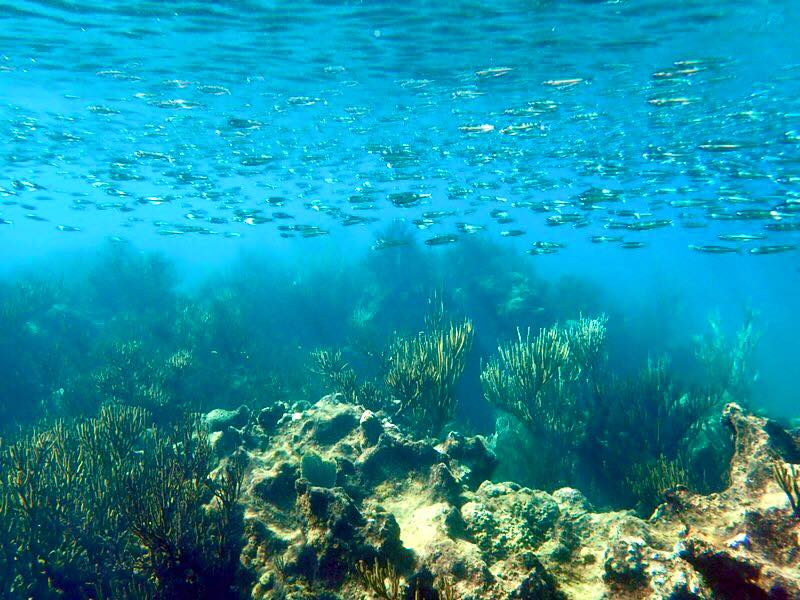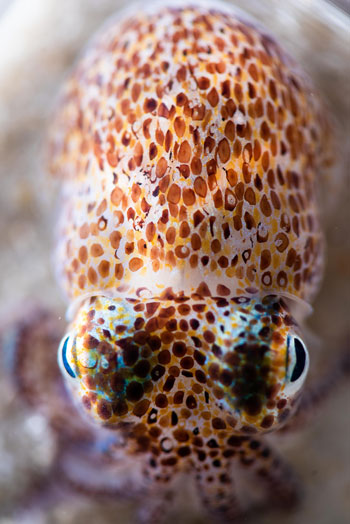MBL to Become Hub for Aquatic Symbiosis Research through Major New Grant

MBL Director Nipam Patel has received a major grant from the Gordon and Betty Moore Foundation to develop MBL as a central resource for the scientific community to study symbiosis in aquatic organisms.
Symbiosis, in its original definition, is the “living together of unlike organisms.” Symbioses include mutually beneficial partnerships – such as coral animals and the photosynthetic algae that live in their tissues -- parasite-host relationships, and other interactions less easy to categorize.
Major symbiotic events have occurred in aquatic systems, including the origin of the eukaryotic cell almost two billion years ago – a symbiotic integration of two different microorganisms that created the ancestor of all animals, plants, fungi and protists.
“Symbiosis already plays an important role at the MBL in its research and education initiatives,” said Patel. “This grant will build upon that foundation, specifically through the MBL’s strategic initiative to develop new, genetically tractable research organisms and to support the scientific communities that adopt and use them in a number of important ways.”
Working with staff at the Moore Foundation, the MBL will select several symbiotic aquatic species to focus on initially, and over the next three years will develop the infrastructure to advance the organisms’ culture, husbandry, and research tractability. This funding will focus on developing techniques and tools at the MBL to advance research on the animal side of these symbiotic relationships.
 Coral animals and photosynthetic algae have a symbiotic relationship that provides the algae with shelter, gives coral reefs their colors, and supplies both organisms with nutrients. Credit: Loretta Roberson
Coral animals and photosynthetic algae have a symbiotic relationship that provides the algae with shelter, gives coral reefs their colors, and supplies both organisms with nutrients. Credit: Loretta Roberson“We are thrilled to support MBL to help increase its capacity to culture and rear marine symbioses for the aquatic symbiosis community, include these organisms in their advanced training workshops and course curricula, and share their cultivation protocols with other researchers,” said Adam Jones, a program officer from the Moore Foundation’s Symbiosis in Aquatic Systems Initiative. “This grant is an important part of the Initiative’s efforts to support new research infrastructure, as MBL will create methods, tools, and resources to improve the ways scientists study how aquatic symbioses evolve, function, and serve ecosystem roles.”
 One of the most well-studied aquatic symbioses is the bobtail squid and the bioluminescent bacteria A. fischeri, which lives in a light organ in the squid’s mantle. Credit: Tim Briggs
One of the most well-studied aquatic symbioses is the bobtail squid and the bioluminescent bacteria A. fischeri, which lives in a light organ in the squid’s mantle. Credit: Tim BriggsFor each organism, the MBL will develop culturing and rearing resources (including automated tank systems) to increase their accessibility and usefulness for symbiosis research. These techniques and protocols will be openly shared with the scientific community.
In addition, the MBL will develop a repository of genetic tools, such as microinjection and electroporation methods and molecular constructs for genetic manipulation. It will also create and house a limited number of transgenic and mutant lines for community use and safety backup purposes.
Finally, the MBL will widely disseminate the resources it develops for culture, husbandry, and genetic investigation of various emerging research organisms within the scientific community. Similar to the mission of the National Xenopus Resource at the MBL, this initiative will enable the MBL to convene workshops, meetings and other training opportunities for the aquatic symbiosis community, and other communities interested in expanding the repertoire of organisms used in basic biological research.
In 2020, the foundation’s Symbiosis in Aquatic Systems Initiative announced funding support for 42 teams of scientists, including three teams with MBL investigators, to advance model systems in aquatic symbiosis. All of these teams will be able to utilize the resources the MBL develops through this new grant.
The knowledge and technologies the initiative spawns will also be available to MBL resident scientists, investigators in its Whitman Center program, and students in its advanced research training programs, undergraduate and high school courses, which attract more than 1,200 scientists and trainees per year.